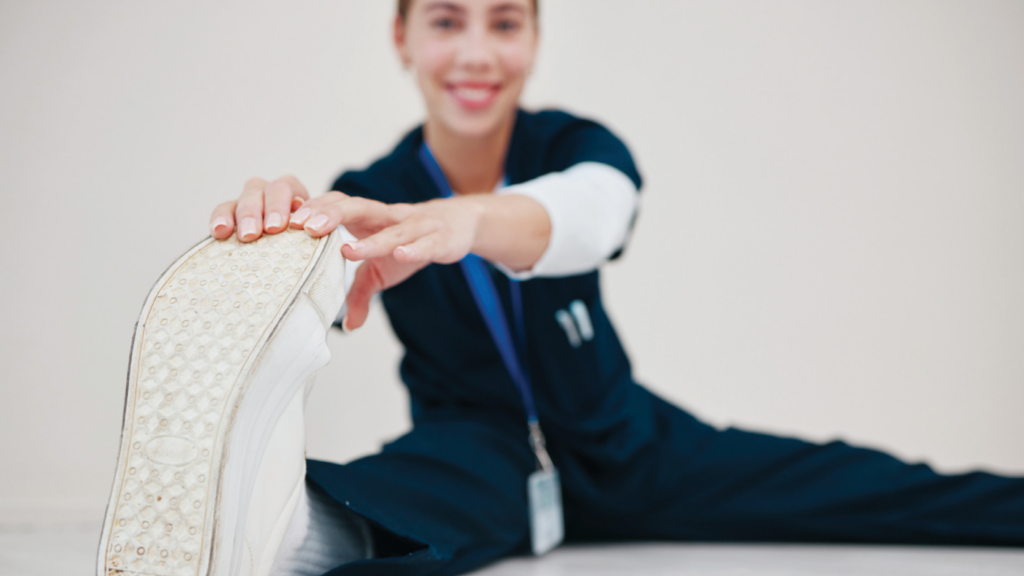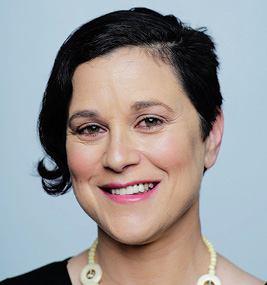
I recently had the honour of speaking at the New Dentist Study Club in Toronto and couldn’t help but feel a significant sense of responsibility. The talk on ergonomics for dentists was not just about improving workplace comfort, it was about preserving careers and enhancing the quality of life for dedicated dental professionals.
Dentists (and their teams), in tackling plaque and cavities, often fall prey to poor ergonomics. It’s easy to neglect your own posture while you are focusing on dentistry, taking care of your patients, and keeping an eye on the clock.
Musculoskeletal disorders (MSDs) are a common reason for reduced hours, time off, or early retirement among dentists. As dentists, you do everything to make sure dentistry doesn’t hurt. But what about you? What are you doing to make sure dentistry doesn’t hurt YOU? You can have a long career without pain by following these tips.
1. Posture and positioning: The neutral posture
- Sit with your back straight, maintaining the natural S-curve of your spine.
- Keep your shoulders relaxed and elbows close to your body.
- Position your feet flat on the floor, in an athletic stance, roughly shoulder length apart.
- Tilt your head forward no more than 15-20 degrees.
- Position the height of the chair so that your hips are slightly higher than your knees.
- Tilt the stool slightly downwards.
2. Patient positioning
- Adjust the patient’s chair to a height that allows you to work with your arms at a comfortable level.
- Use the chair’s tilt function to position the patient’s head appropriately.
- Communicate with the patient to ensure they’re comfortable and can maintain the position for the duration of the procedure.
3. Equipment positioning
- Position your instrument tray close to your body, ideally no more than 21 inches away.
- Arrange your instruments in the order you’ll use them to minimize reaching and searching.
- Use a mobile cart for larger equipment to keep it within reach.
4. When choosing loupes
- Opt for through-the-lens (TTL) loupes, which are customized to your specific measurements.
- Look for lightweight options to reduce neck strain.
- Consider ergonomic loupes which will keep your back, neck, and head straight.
5. Instruments
Larger grip instruments decrease hand fatigue and strain and are more comfortable for you.
- Select instruments that are lighter.
- Choose larger diameter handles.
- Pick thick silicone handles (12-14 mm).
6. Chairs and stools
Consider these when picking your operatory chair.
- Adjustability: There should be 4 ways to adjust the chair: seat height, seat tilt, backrest angle/tilt and backrest height.
- Lumbar support: Lumbar support helps maintain the natural curve of the spine, reducing back strain.
- Mobility: Smooth-rolling casters allow easy movement around the dental operatory, increasing efficiency.
- Think about using dynamic chairs and stools that incorporate movement to promote active sitting and reduce static postures.
7. The importance of eye breaks, aka the ‘20-20-20’ rule
Staring into the tiny space of a patient’s mouth for hours on end can lead to eye strain and fatigue. The 20-20-20 rule is a good guideline: every 20 minutes, look at something 20 feet away for 20 seconds. During a restoration, your dental assistant can light cure the restoration for 20 seconds while you look away at something 20 feet away. Another tip to reduce eye strain is to blink deliberately to moisten your eyes.
8. Stretching
If you make your office a place where the team feels comfortable stretching at work, they will take these microbreaks to reduce muscle tension and fatigue. Do stretches during the morning huddle, post exercises in the staff room, stretch as you are walking down the hall and in-between patients. Normalize stretching so it is as routine as hand washing and putting on PPE. Here are some recommended stretches.
- Neck stretch: Tilt head towards shoulder, hold for 15-30 seconds.
- Shoulder shrug: Lift shoulders toward ears, hold for 3 seconds, release.
- Cat-cow stretch: On all fours, alternate arching and rounding your back.
- Chest opener: Clasp hands behind back, straighten arms, and lift gently.
- Wrist flexor stretch: Extend one arm forward, pull back on fingers with the other hand.
- Seated back twist: Sit tall, twist torso to one side, hold for 15 seconds, then switch.
9. Keep Moving
Microbreaks are short pauses in your work. These brief pauses can help reduce muscle fatigue and prevent the buildup of tension. I often leave my clients with these two somewhat cheesy but memorable expressions: “motion is the lotion” and “the next posture is the best posture.” Don’t be a statue, keep moving and changing your position throughout the day. Don’t sit in one spot during the whole procedure. Take mini breaks to change position and do some procedures standing as standing allows you to move around.
10. Core and strengthening exercises
Dentists are athletes of the small muscles. Like an athlete, you have to take care of your body to be at the top of your game. Try these exercises to improve your core which will improve your posture.
- Plank: Hold for 30 seconds, keep body straight.
- Leg lifts: Lie on back, lift legs to 90 degrees and lower slowly.
- Wall slides: Slide back down against the wall for 10 reps.
- Glute bridge: Lift hips while lying on your back, hold for 5 seconds.
Conclusion
As I wrapped up my talk to the New Dentist Study Club, I emphasized one key point: ergonomics is not a luxury in dentistry – it’s a necessity. Remember, you are athletes, and your bodies are your most valuable tools. By embracing ergonomic principles, you’re not just improving your own health and comfort, you’re ensuring that you can continue to provide the highest quality care to your patients for years to come.
Here’s to a long, healthy, and ergonomic dental career!

Sandi Danilowitz has over 20 years of experience in industrial ergonomics, office ergonomics, and corporate wellness. Sandi helps individuals and organizations improve health and productivity through tailored, practical solutions. Sandi’s holistic approach, grounded in biomechanics and workplace wellness, ensures a well-rounded strategy for promoting health in various work environments. She can be reached at sandi@thehealthengine.com.











